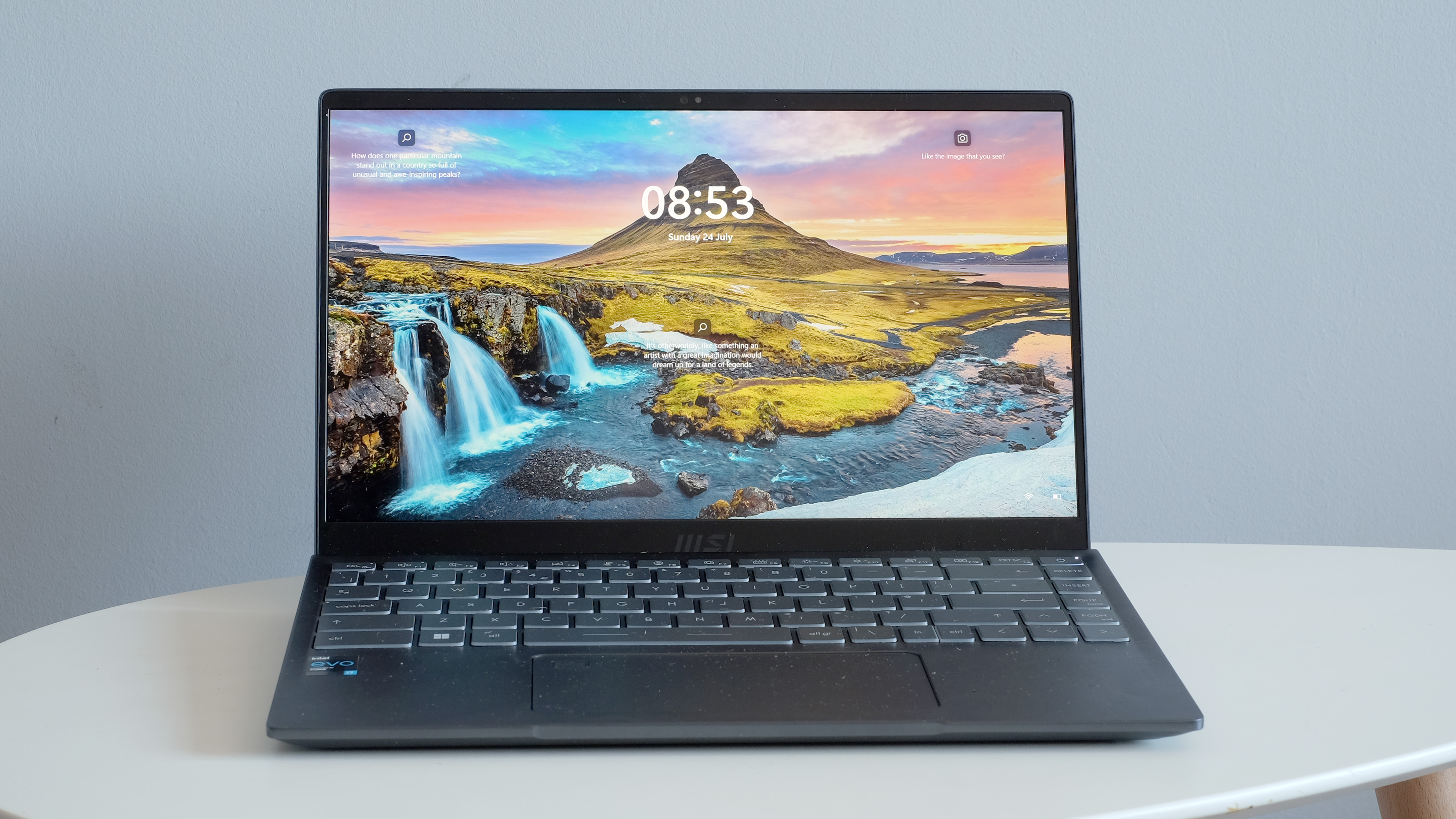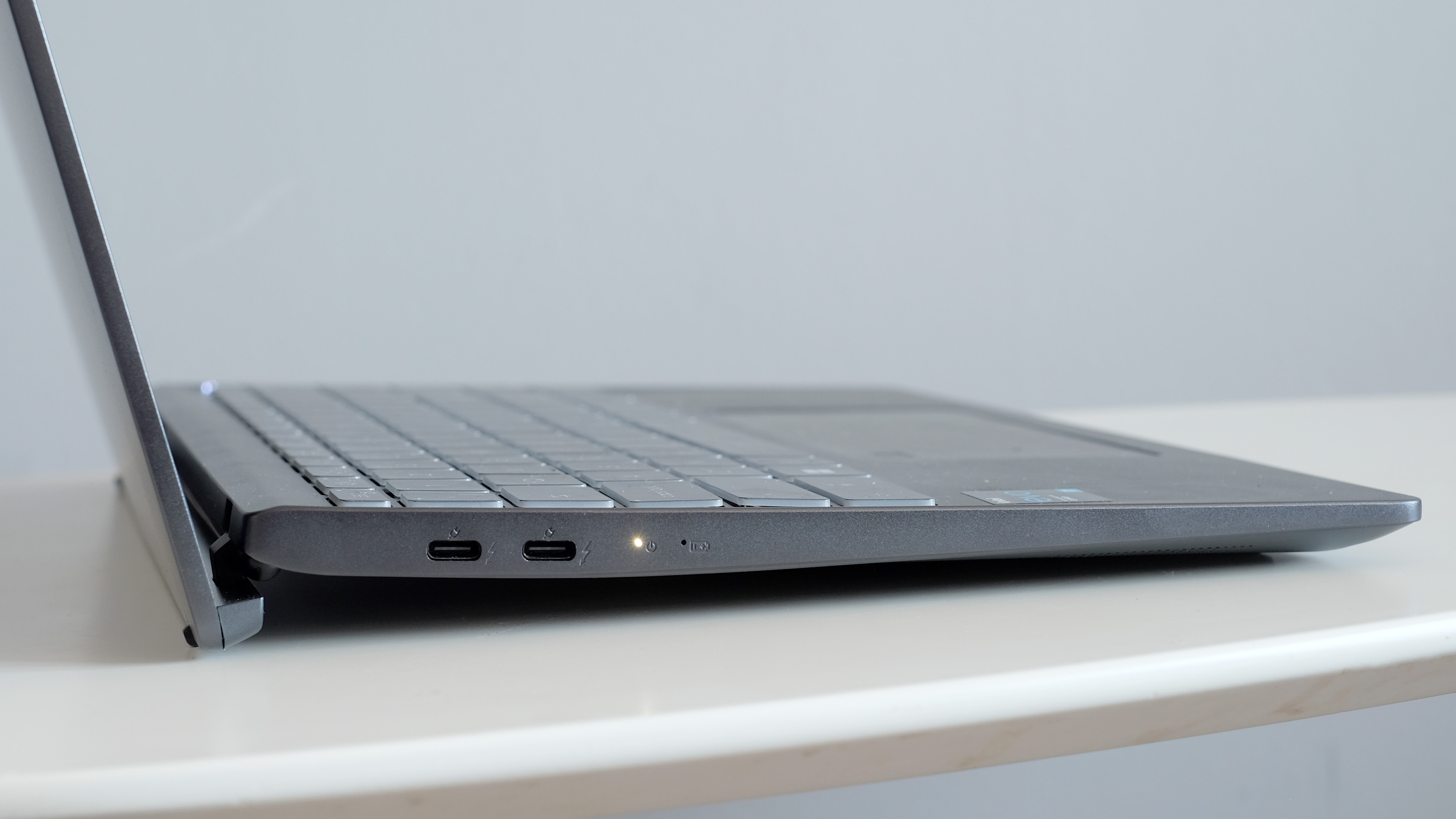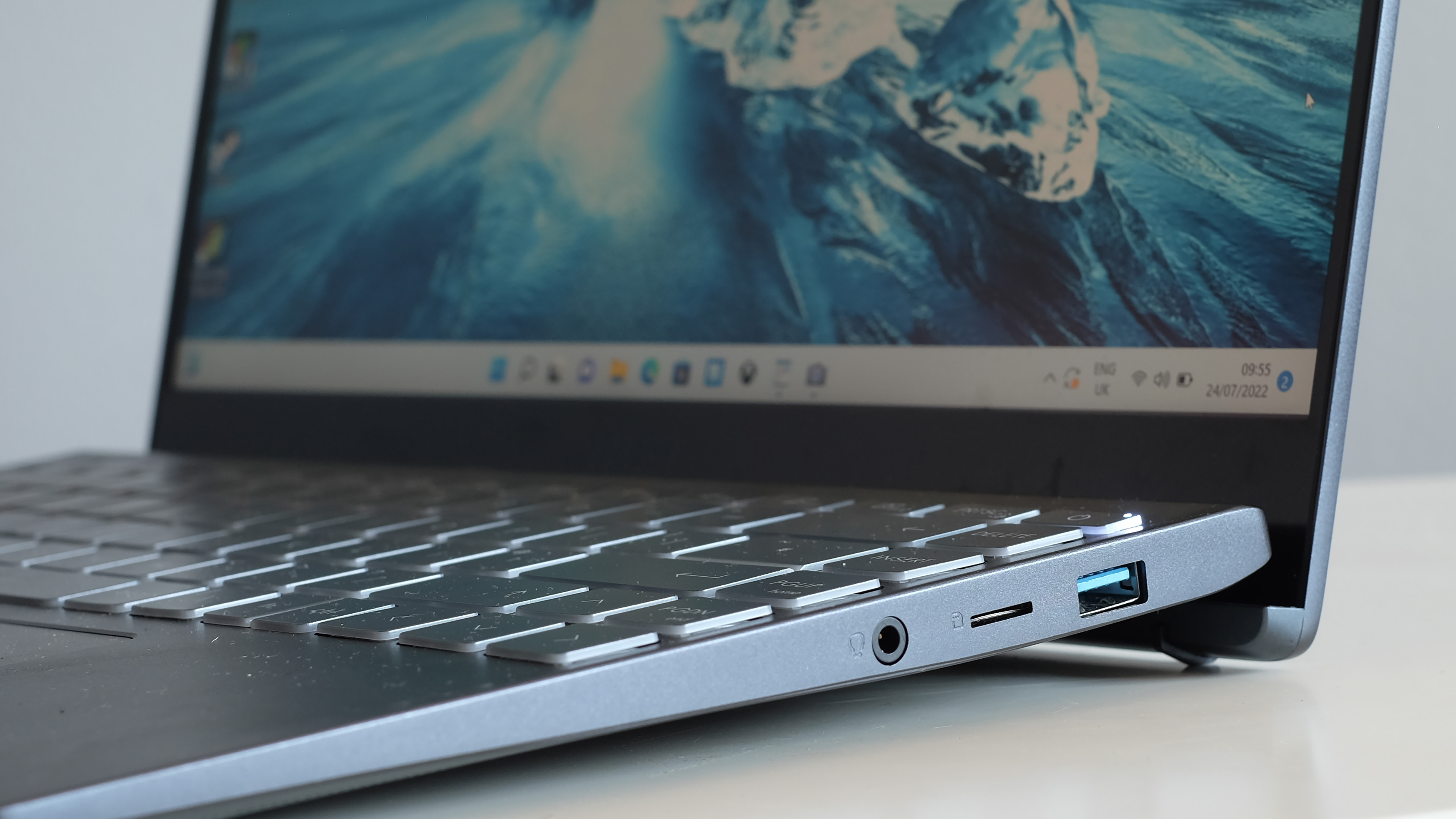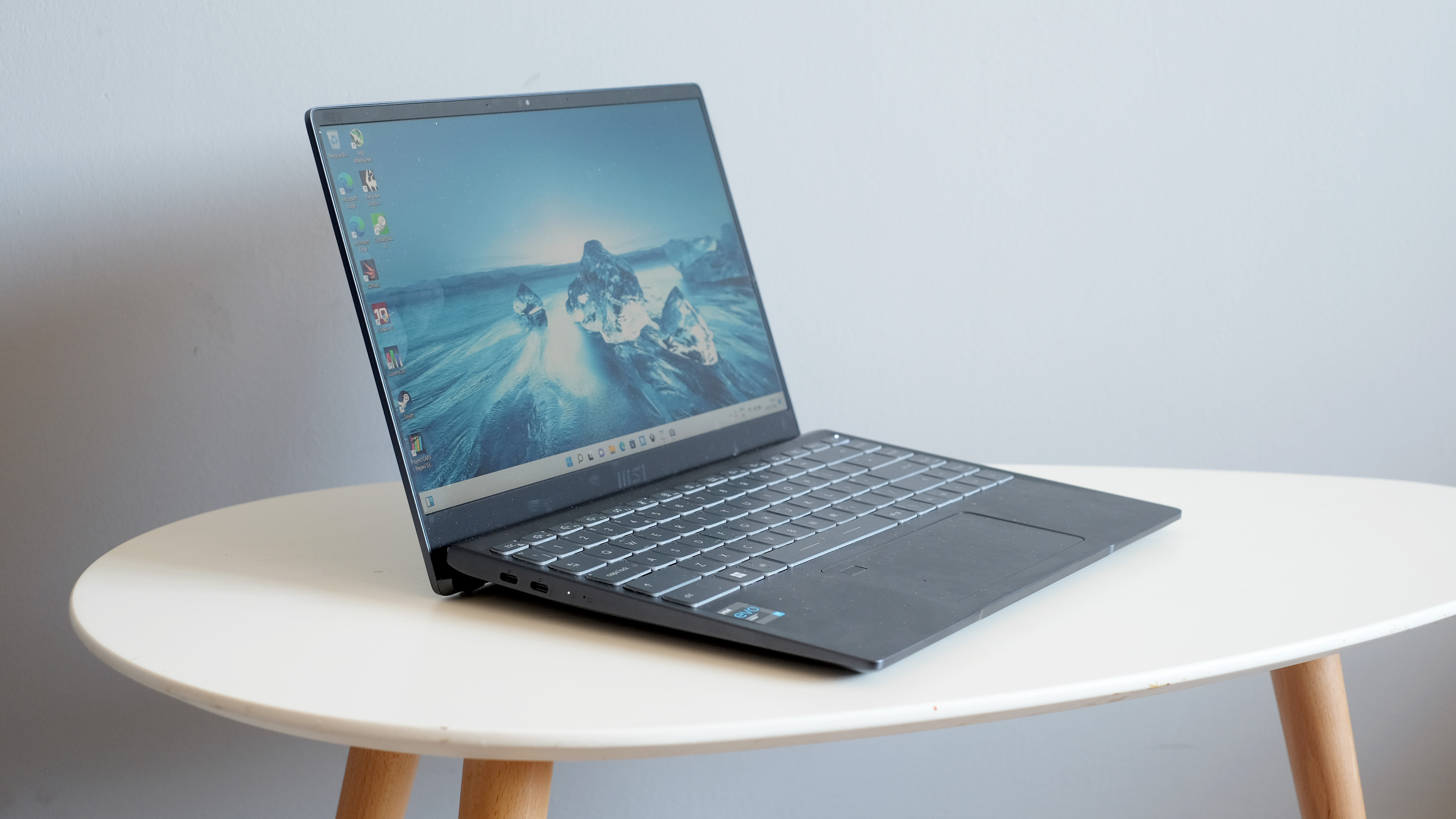The MSI Prestige 14 Evo review: a business laptop with plenty of substance
The MSI Prestige 14 Evo isn’t quite as glossy as some ultra-portables but it makes up for it with excellent performance


The MSI Prestige 14 Evo isn’t quite as glossy as some ultra-portables but it makes up for it with excellent performance and a good amount of RAM and storage for the money.
-
+
Excellent performance for its size and weight
-
+
Light and highly portable
-
+
Good value for high-spec buyers
-
-
Not that comfy for on-the-knees use
-
-
Just-OK battery life if you don’t choose the right performance mode
-
-
Matte display won’t appeal to all tastes
Why you can trust T3

Here in this MSI Prestige 14 Evo review, you'll find an ultraportable laptop that boasts killer performance.
MSI's Prestige range is home to “business” laptops. But the MSI Prestige 14 Evo is mostly a business computer in the sense it’s a great buddy to jet around the world with while picking up freebies in airport lounges.
Don’t have an Amex Business Platinum card to get you into those lounges? The MSI Prestige 14 Evo is a top buy for anyone who wants a practical, surprisingly powerful laptop for regular portable use.
Sure, its sensible design isn't going to blow the best lightweight laptops like the Dell XPS 13 and MacBook Airs out of the water, but MSI gives you unusually powerful control over its performance and it’s very light.
MSI Prestige 14 Evo review: price and availability
The MSI Prestige 14 Evo landed in mid-2022 among the earlier waves of Intel 12th Gen CPU laptops.
At the time of review you can find it online for around $1169 in the US or £949-999 in the UK. MSI produces this laptop in a bunch of different specs, including some super high-end ones with up to 32GB RAM.
Mine has 16GB RAM and a 512GB SSD, higher numbers than you’ll typically see from the biggest names for this sort of money.
Get all the latest news, reviews, deals and buying guides on gorgeous tech, home and active products from the T3 experts
MSI Prestige 14 Evo review: design and display

Right at the start of this review, I downplayed the idea the MSI Prestige 14 Evo is a business laptop. However, there are a few factors it shares with the kind that should really be left at the office.
First, the screen is matt. Almost all laptops you might see advised on the side of a bus, or in big train station posters, have glossy screens topped with glass. The MSI Prestige 14 Evo's display is plastic and has a raised border around the sides.
This, for sure, looks less slick. A matt finish also makes colours pop less, but the horizontal screen borders are slim. And you'll be grateful for the finish if you try to use the MSI Prestige 14 Evo outdoors.
A matt surface scatters reflections, making screen visibility comparable with that of a glossy laptop with much higher display brightness.
The MSI Prestige 14 Evo's 14-inch screen is only mid-tier bright - around 310 nits depending on which square inch of screen you look at. However, thanks to the matt finish it's more comfortable to use than a 400-plus nit glossy screen, which ends up reflecting your face right back at you.
I used the MSI Prestige 14 Evo outdoors in the sun for a bunch of hours with a camping chair, like some sort of digital nomad. It worked perfectly, with one caveat.
The MSI Prestige 14 Evo's screen hinge lifts the back of the laptop up. When on a desk this angles the keyboard a bit, for comfort. But perched on your knees it means the weight ends up distributed on a small surface area, a recipe for some nice angry-looking indents above your kneecaps after an hour or so.
Of course, this is only super-noticeable if you work out in the warm sun in a pair of shorts or, for the real high-rollers, poolside in a swimming costume. The MSI Prestige 14 Evo only weighs 1.2kg so there isn't actually that much weight to distribute in the first place.

The casing appears to be made of a mix of aluminium and magnesium alloys, and the stiffness of the body plates is decent but not MacBook-grade. Still, for a screen without a chunky pane of glass on its surface, the lid section is pretty stiff.
I find the MSI Prestige 14 Evo just as good as any laptop out there for portable use. Its footprint is pretty small, the weight is low and while nothing revolutionary, the 15.9mm thickness feels slim.
You get a classic full-size USB, a godsend for your old peripherals. There's also a microSD card slot, and of course a headphone jack. On the other side we get two Thunderbolt 4 USB-C ports. One of these is taken up by the charger when plugged-in, but you can connect a lot to a single one, with the right adapter or dock, thanks to Thunderbolt's high bandwidth.
And how does the screen look when not out in the sun? Pretty good, just not the best around. Its colour depth is solid and not undersaturated, but not level with one of Asus’s OLED screen ZenBooks with, or a MacBook Air M2.
Resolution is the classic 1080p standard too. This is a widescreen display, not the taller 16:10 or 3:2 shape that has become so popular in recent years - these make it feel as though you have more space with which to work when using "productivity" apps.
Get up close in a Word document and fonts will look a little pixelated at 1080p. However, I don't think we need to dwell on this too much. For under a grand the MSI Prestige 14 Evo nets you 16GB RAM and a 512GB SSD. Dell's latest XPS 13 costs ~$100/£100 more at this spec, has a weaker processor and similar pixel density. To get 4K in that line, you're looking at an extra $400/£370 or more.
MSI Prestige 14 Evo review: performance and battery life

The MSI Prestige 14 Evo is a surprise performance hit because it uses an Intel Core i7-1280P CPU, which is not what I'd expect to see in a laptop like this.
Intel's higher-end 12th Gen processors fit roughly into three groups. You have the "U" family for super-thin and light laptops, team "H" for chunky performance workstations and gaming laptops, and the middle-weight "P" troupe. At 1.2kg the MSI Prestige 14 Evo is a natural fit for a "U" processor, but MSI uses one of the punchy P-series chipsets instead.
This means in some tests it outstrips a MacBook Pro with the M2 chip, and it absolutely destroys every last-generation thin and light laptop I've used. MSI also provides unusually good control over the performance of system.
Tap the F7 key and the MSI Prestige 14 Evo cycles between five gears. The standard one is an "AI" auto mode, but the performance mode lets you basically turbo charge the system, while the Quiet and ultra-low power modes restrict performance a lot but are going to keep the thing running much cooler and quieter.
These are the kind of controls usually seen in a gaming laptop, which makes sense when that is MSI's best known type of laptop. It means you can choose how hot and loud you want the MSI Prestige 14 Evo to run.
Maxed-out, playing a tough game in the Performance mode, large parts of the casing get too hot to touch for more than a few seconds. But it’s going to be useful for processor-intensive jobs like video rendering where you leave the laptop to do its thing, and the power on tap embarrasses something like the Microsoft Surface Laptop Go 2. That might not seem fair when that's a "budget" model. But it has half the storage, half the RAM and a step-down last-gen processor. If anything, Microsoft would charge more than MSI if it made such a laptop with the MSI Prestige 14 Evo's spec.
The laptop only has Intel Xe graphics, the stuff baked into the Intel chipset. But thanks to the amount of juice it can draw in the Performance mode the MSI Prestige 14 Evo does a remarkably recent job with last-gen console games.
But is a powerful processor bad news for battery life? Sort of, but the situation could be a lot worse.
Using the default Intelligent power mode I found the MSI Prestige 14 Evo could last around 8 to 8.5 hours of light work with Windows 11’s Battery Saver setting. However, to get the best results you need to once again use MSI’s own performance controls, which limit the amount of power the processor can draw.
After using the MSI Prestige 14 Evo to do a bit of writing and browsing for two hours, the laptop lost 19% battery in the most power-frugal setting. This suggests the maximum battery life is 10-10.5 hours, if you put the work in to make sure you are in the right mode. You wouldn’t want to do anything too taxing while stripping back performance, but it is perfectly fine for light day-to-day jobs.
The MSI Prestige 14 Evo's webcam is a typical 720p affair, nothing too special. But it does at least render colour better than some. Its speakers are pretty weak, though. There's no bass here, leading to a fairly tinny sound character. While a DTS processing app can improve matters a bit, and fiddle with the sound field, it can't change that these speakers just aren't very good.
MSI Prestige 14 Evo review: keyboard and trackpad

The MSI Prestige 14 Evo has a decent keyboard, one I find better for typing out thousands of words at a time more than most slim and light laptops of the last year. Its keys have greater travel than those of a MacBook's Magic keyboard or the last-generation Microsoft Surface Laptops.
The key depress feel is mellow and dark, not clicky. This might be a problem if these keys were ultra-shallow, but they simply aren't by today's standards.
Each key also has translucent sides, which lets the LED glow of the keyboard backlight shine through nicely, rather than it just spilling out of the sides or through the key lettering. It's a pure white backlight with three intensity levels.
There are no obvious quality compromises in the trackpad either. It has a textured glass surface and makes up for its short height with extra width. You can blame the widescreen display for this. There is just not as much room for the pad as there would be in a 16:10 laptop.
The clicker is not as elegant as the best. It's a mechanical one, not the haptic kind found in the latest Huawei and Microsoft laptops, and MacBooks. I actually prefer the feel of mechanical pads, but the difference in pad depth across its surface is a little more obvious than some, and the feel of the "click" just isn't super-refined. However, it's not too stiff or dead-zone-tastic. And that's important.
There's also a fingerprint reader in one corner. These are usually better-placed when hidden in the keyboard somewhere, but it's not as if the pad is light on horizontal space.
MSI Prestige 14 Evo review: verdict

Power and portability are the two key strengths of the MSI Prestige 14 Evo. It has an extremely punchy processor, and MSI actually lets you use it properly. A set of performance modes can dramatically hold performance back to save battery, or let it run wild to the point much of the casing becomes uncomfortably hot. It makes some other models seem as though they have permanently attached training wheels.
You can get better battery life elsewhere, more colourful screens, and some may prefer a taller screen shape. They suit office and some creativity apps better than 16:9 widescreen. However, MSI has made an impressively "MSI" laptop, one that shoehorns uncompromising performance into a shell that looks like it shouldn't be able to fit it all in.
Also consider
Loads of laptops can fulfil the same role as the MSI Prestige 14 Evo. In Apple’s line-up you might pick the MacBook Air, although if you want to spend similar money you’re stuck with the older M1 version, and even then you’ll pay hundreds of pounds/dollars more to get 16GB RAM and a 512GB SSD. Its glossy screen is more punchy-looking than the MSI’s though.
Dell’s XPS 13 is another sound buy, and costs only slightly more with 16GB RAM and 512GB storage. Its screen is significantly brighter, but performance is not as good because it uses a lower-power “U” series Intel chipset.
You should also consider the Samsung Galaxy Book 2 Pro, which has a super-bold AMOLED display. The 13.3-inch version is only available in a lower-spec variant, but if 8GB RAM and 256GB space will do it is a display outlier.

Andrew is a freelance tech and entertainment journalist. He writes for T3, Wired, Forbes, The Guardian, The Standard, TrustedReviews and Shortlist, among others.
Laptop and computing content is his specialism at T3, but he also regularly covers fitness tech, audio and mobile devices.
He began writing about tech full time in 2008, back when the Nintendo Wii was riding high and smartphones were still new.